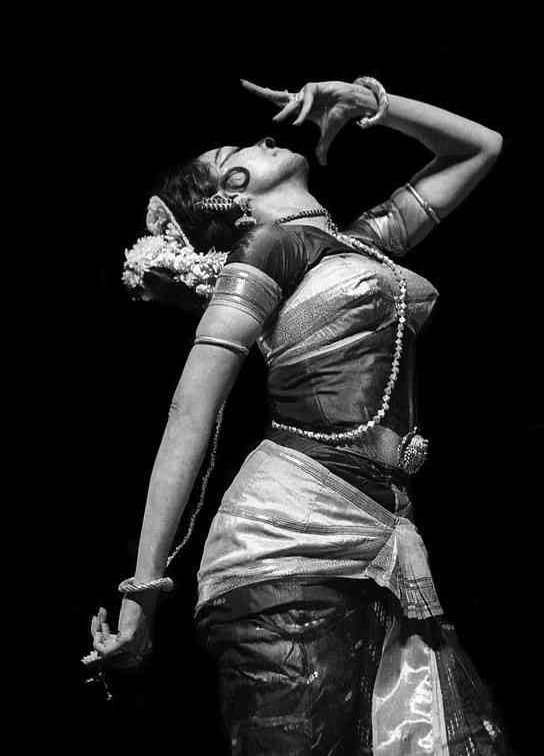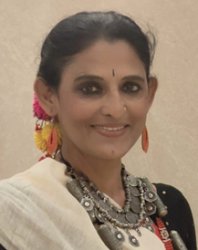 |
  |
 |
  |
Whispers of divinity: Yamini Krishnamurthy's dance odyssey - Navina Jafa e-mail: navina.jafa@gmail.com Photos: Avinash Pasricha August 10, 2024 Yamini Krishnamurthy carved her place in the history of classical Indian dance from the 1950s to the 1970s, when India saw the emergence of the first generation of non-hereditary female performers take the centre of the stage. Her rigorous training in Bharatanatyam at Kalakshetra, along with Kuchipudi and Odissi under eminent gurus, and her music training expanded her artistic horizon. Her performances were infused with electrifying energy, leaving an indelible impact on the dance world and the modern stage, transcending the chaotic environment that often forces performers to constantly negotiate content and aesthetics dictated by the audience. In 1976, I was just eleven years old when I first met Yamini Akka in the home of my Guru, Kapila Vatsyayan, the czarina of Indian culture who was also my neighbour in the government colony located in Chanakyapuri, New Delhi. The women sat in Kapila Ji's bedroom, which had only one spectacular photograph hanging above her simple bed: that of the Bharatanatyam legend Balasaraswati. Reflecting on that evening and the conversation between Kapila Ji and Yamini Akka, I realise now that I have witnessed an immense history of dance aesthetics. Kapila Ji was, at that time, working on her groundbreaking book on Bharata's Natya Shastra. She had travelled far and wide, examining several manuscripts of the text. Her process of interpreting the idea of movement, space, emotions, and the treatment of the body was balanced between her meditative studies on the Natya Shastra and its various commentaries and her learning of Western modern dance through the Laban and Hanya Holm tools of movement analysis.  For Kapila Ji, whose core work was on the interdisciplinary relationship of various arts, the dance of Yamini Akka symbolised many layers. She had first seen a young Yamini perform in the Chidambaram temple while researching the relationship of dance in Indian sculptures. In 1999, she told me, "I have never seen Yamini dance as she did when I first saw her perform in the supreme temple of Nataraj Shiva (the Lord of Dance) in Chidambaram, Tamil Nadu. She brought the Karanas sculptures - dance units combining hands, body posture, and movements - alive. Soon after, I started conversing with her father, and the family came to Delhi." Kapila Ji was a good listener. As the two discussed how Yamini Akka internalised and recreated dance, the latter expressed that dance must vibrate within the body, awakening muscle and bone and connecting the mind and the body. Yet, in their conversation, Yamini Akka made a point that stayed with me. She expressed that while Indian dance theory mentions that performance is nurtured by the exchange of energy between the performer and her audience, she emphasised that, consciously, the dance must feel separate from the audience. She must awaken the audience from within, drawing on her inner strength. The audience cannot and should not dictate the performance, for that would only dilute the essence of the dance. Only when she controls the process of dance-making on stage can she lead the audience on a journey. Two dancers in Delhi were particularly special to Kapila Ji: my dance Guru, the Kathak legend Pandit Birju Maharaj, and the Bharatanatyam icon Yamini Krishnamurthy. Kapila Ji worked diligently to bring them to Delhi and supported and nurtured their talent as much as possible, providing them with state patronage. She would always say, "Both Yamini and Birju have a free licence to call me at any time of day or night, ask for anything, and come to my house anytime. I will always be there for them. Both are extraordinary artistes who, as in the process of yagya (fire ritual), have offered their body and mind to the process of dance. Spatial movements and an intuitive understanding of body weight in movement in perfect rhythm, intricately blended with emotion, are common to both. But in Yamini's art, I learned the practical execution of sculpture comes alive in dance, while in Birju's art, I see the art of Indian painting recreated!"  In years to come, the inspired Kapila Vatsyayan compiled her study in several writings, including the book 'Arrested Movement: Sculpture and Painting'; Iconic Avinash Pasricha froze dance in photographs that captured the majestic art of Yamini Akka in a new technique. Since Indian classical dance is a magical art woven into mathematics to capture expression and movements, it is a fascinating play in time. The pioneering technique of multiple exposed images in a film camera by Pasricha, some of which he gave for calendars, like the one on the cover page featuring Yamini Krishnamurthy, are artistic creations of capturing movement. In conversations with Kapila Ji and Yamini Akka, I recall her passionately stating that her life in and for dance is all about creating and seeking beauty. Her iconic performances and chiselled body shape moved on the stage, balancing fire with grace. Her overwhelming, sculpturesque rendering of dance was characterised by precise geometry and lucidity, punctuated by perfect poses after a series of movements. As Yamini Akka's soul leaves this body and flies somewhere above Chidambaram, the Temple of Nataraj, there will be a constellation and a whisper of the belief in the temple that one who performs the 'karanas' of Shiva Nataraj, the dance of the Lord of Dance, will fly free!  Navina Jafa is an Indian classical dancer, dance scholar, and cultural heritage expert, known for her expertise in Kathak and contributions to tourism. Response * Absolutely compelling, Navina. And haunting, as in.. “Yet, in their conversation, Yamini Akka made a point that stayed with me. She expressed that while Indian dance theory mentions that performance is nurtured by the exchange of energy between the performer and her audience, she emphasised that, consciously, the dance must feel separate from the audience. She must awaken the audience from within, drawing on her inner strength. The audience cannot and should not dictate the performance, for that would only dilute the essence of the dance. Only when she controls the process of dance-making on stage can she lead the audience on a journey.”You’ve put it so simply and elegantly. And bring to mind the Yeats we so often heard elocuted in College (St. Stephens) “Labour is blossoming or dancing where- Ramu Damodaran (UN, Aug 11, 2024) * Dear Navina, Loved the way you ended the article. This is one of the best articles on Yaminiji that I have read in recent times. Having spent some time with her in person and having heard loads about her from my Guru Koradaji, her Kuchipudi dancing partner, she comes alive dancing in every word that you have expressed. When Stars and Scholars come together, a galaxy is created. Thank you for sharing this . - Vyjayanthi Kashi (Aug 11, 2024) Post your comments Please provide your name and email id along with your comment. All appropriate comments posted with name and email id in the blog will also be featured in the site. |